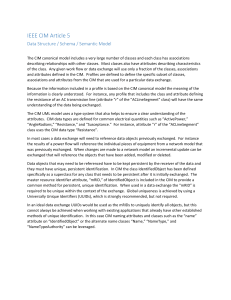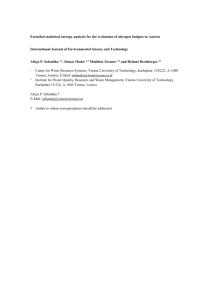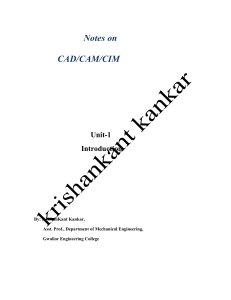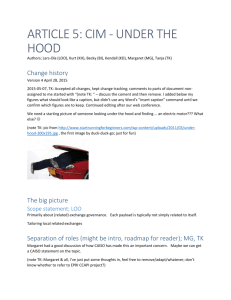Cimetidine as an Anti-Cancer Agent Pan Pantziarka, Gauthier
advertisement
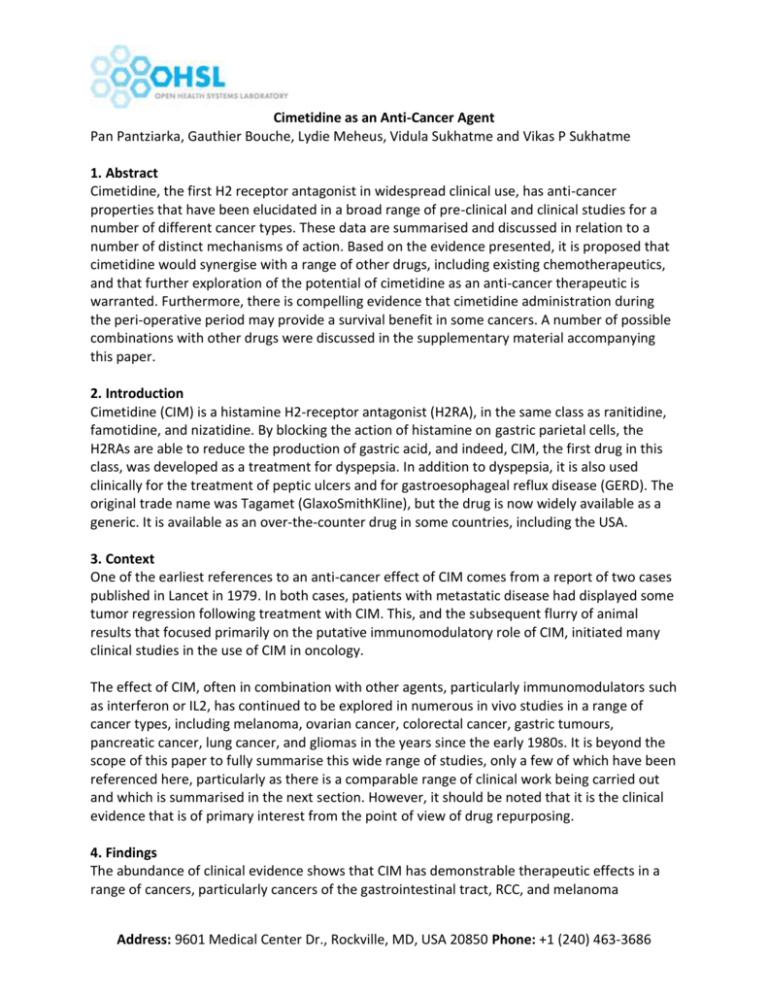
Cimetidine as an Anti-Cancer Agent Pan Pantziarka, Gauthier Bouche, Lydie Meheus, Vidula Sukhatme and Vikas P Sukhatme 1. Abstract Cimetidine, the first H2 receptor antagonist in widespread clinical use, has anti-cancer properties that have been elucidated in a broad range of pre-clinical and clinical studies for a number of different cancer types. These data are summarised and discussed in relation to a number of distinct mechanisms of action. Based on the evidence presented, it is proposed that cimetidine would synergise with a range of other drugs, including existing chemotherapeutics, and that further exploration of the potential of cimetidine as an anti-cancer therapeutic is warranted. Furthermore, there is compelling evidence that cimetidine administration during the peri-operative period may provide a survival benefit in some cancers. A number of possible combinations with other drugs were discussed in the supplementary material accompanying this paper. 2. Introduction Cimetidine (CIM) is a histamine H2-receptor antagonist (H2RA), in the same class as ranitidine, famotidine, and nizatidine. By blocking the action of histamine on gastric parietal cells, the H2RAs are able to reduce the production of gastric acid, and indeed, CIM, the first drug in this class, was developed as a treatment for dyspepsia. In addition to dyspepsia, it is also used clinically for the treatment of peptic ulcers and for gastroesophageal reflux disease (GERD). The original trade name was Tagamet (GlaxoSmithKline), but the drug is now widely available as a generic. It is available as an over-the-counter drug in some countries, including the USA. 3. Context One of the earliest references to an anti-cancer effect of CIM comes from a report of two cases published in Lancet in 1979. In both cases, patients with metastatic disease had displayed some tumor regression following treatment with CIM. This, and the subsequent flurry of animal results that focused primarily on the putative immunomodulatory role of CIM, initiated many clinical studies in the use of CIM in oncology. The effect of CIM, often in combination with other agents, particularly immunomodulators such as interferon or IL2, has continued to be explored in numerous in vivo studies in a range of cancer types, including melanoma, ovarian cancer, colorectal cancer, gastric tumours, pancreatic cancer, lung cancer, and gliomas in the years since the early 1980s. It is beyond the scope of this paper to fully summarise this wide range of studies, only a few of which have been referenced here, particularly as there is a comparable range of clinical work being carried out and which is summarised in the next section. However, it should be noted that it is the clinical evidence that is of primary interest from the point of view of drug repurposing. 4. Findings The abundance of clinical evidence shows that CIM has demonstrable therapeutic effects in a range of cancers, particularly cancers of the gastrointestinal tract, RCC, and melanoma Address: 9601 Medical Center Dr., Rockville, MD, USA 20850 Phone: +1 (240) 463-3686 (summarised in Table 1 in the original document). There is also evidence, both in vitro and in vivo, that these effects are most likely related to well-documented immunomodulatory effects. Furthermore, the evidence indicates that these effects may extend beyond the direct effect on the H2 histamine receptor and that CIM has off-target effects which are not shared by other H2RAs. We can hypothesise, therefore, that a portion of the variability of response to CIM reported in different clinical trials may be explained by the degree of variability of immune function in cancer patients. In common with other immunotherapeutic agents, this suggests that CIM may be more efficacious in patients with lower tumour burden and higher immune function, and in cancers with a greater antigenic potential. Indeed, an explanation proffered for the differences in response reported by different clinical trials in RCC was the better performance status (related to tumour burden) in patients in early trials compared to the poorer response reported in later trials. 5. Conclusions The evidence for an anti-cancer effect of CIM treatment comes from in vitro, in vivo, and considerable amounts of human data. There are a number of well-described mechanisms of action, particularly of multiple immunomodulatory effects which have been assessed in data from clinical trials as well as from in vivo models. As an agent CIM has well-established pharmacokinetics and an excellent toxicity profile. Its use in clinical trials together with several chemotherapeutic agents has not shown any clinically relevant interactions, except with epirubicin, and showed evidence of a possible protective effect with vinorelbine and cisplatin. It is, therefore, a very strong candidate for repurposing as an oncological treatment, particularly as a perioperative treatment for surgical resection of solid tumours, in combination with existing standard treatments and alongside other repurposed drugs in a range of cancers. A number of these multi-drug combinations have been outlined in the supplementary material that accompanies the paper in the in the hope that clinicians act upon this data to initiate clinical trials as a matter of some urgency. 6. Appendices and Acknowledgements This case study has been entirely adapted from:Pantziarka, P., Bouche, G., Meheus, L., Sukhatme, V., & Sukhatme, V. P. (2014). Repurposing drugs in oncology (ReDO)-cimetidine as an anti-cancer agent. Ecancermedicalscience, 8(474494), 1. Please refer to the original peer review research paper for more detailed information. Address: 9601 Medical Center Dr., Rockville, MD, USA 20850 Phone: +1 (240) 463-3686

